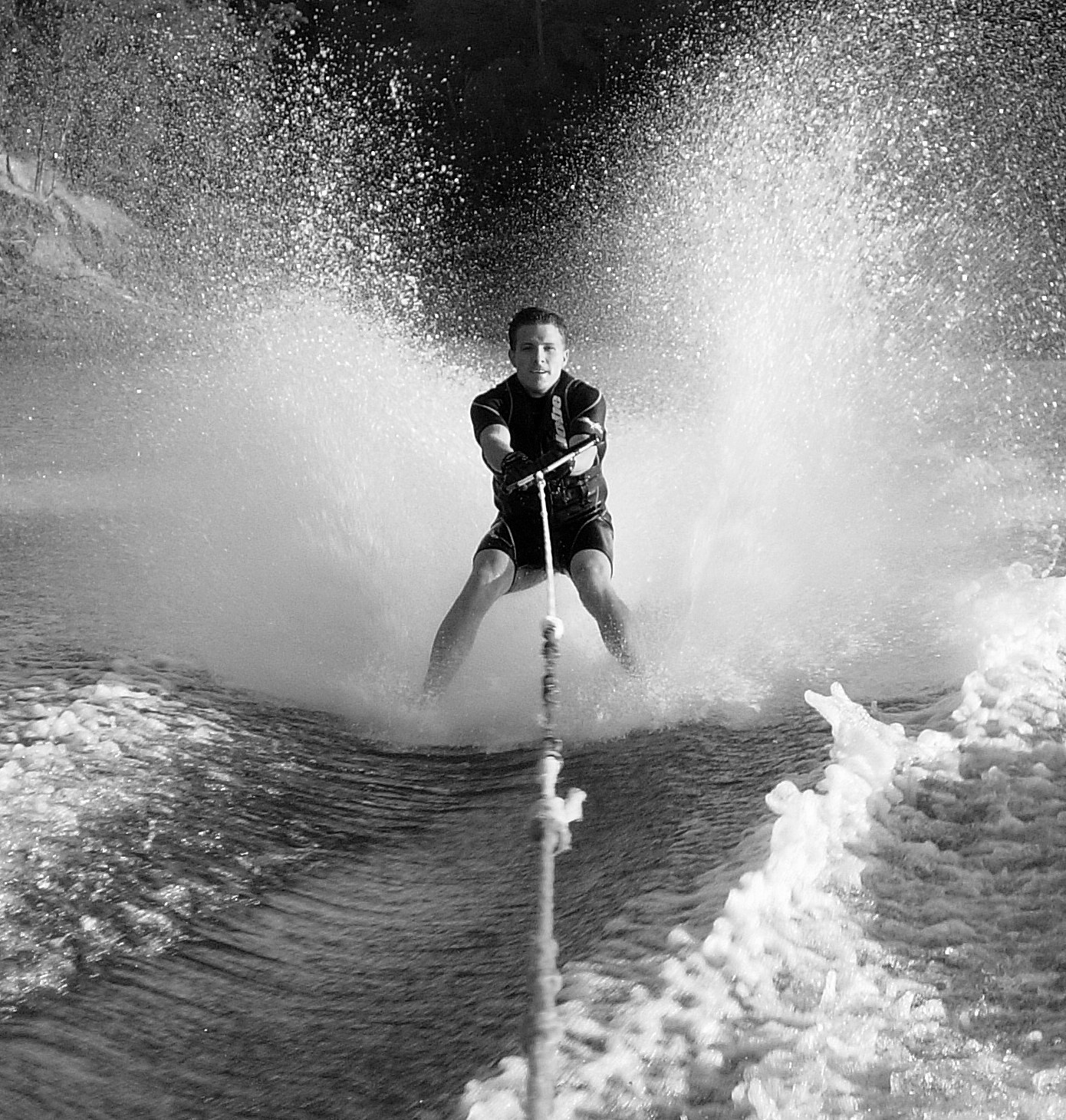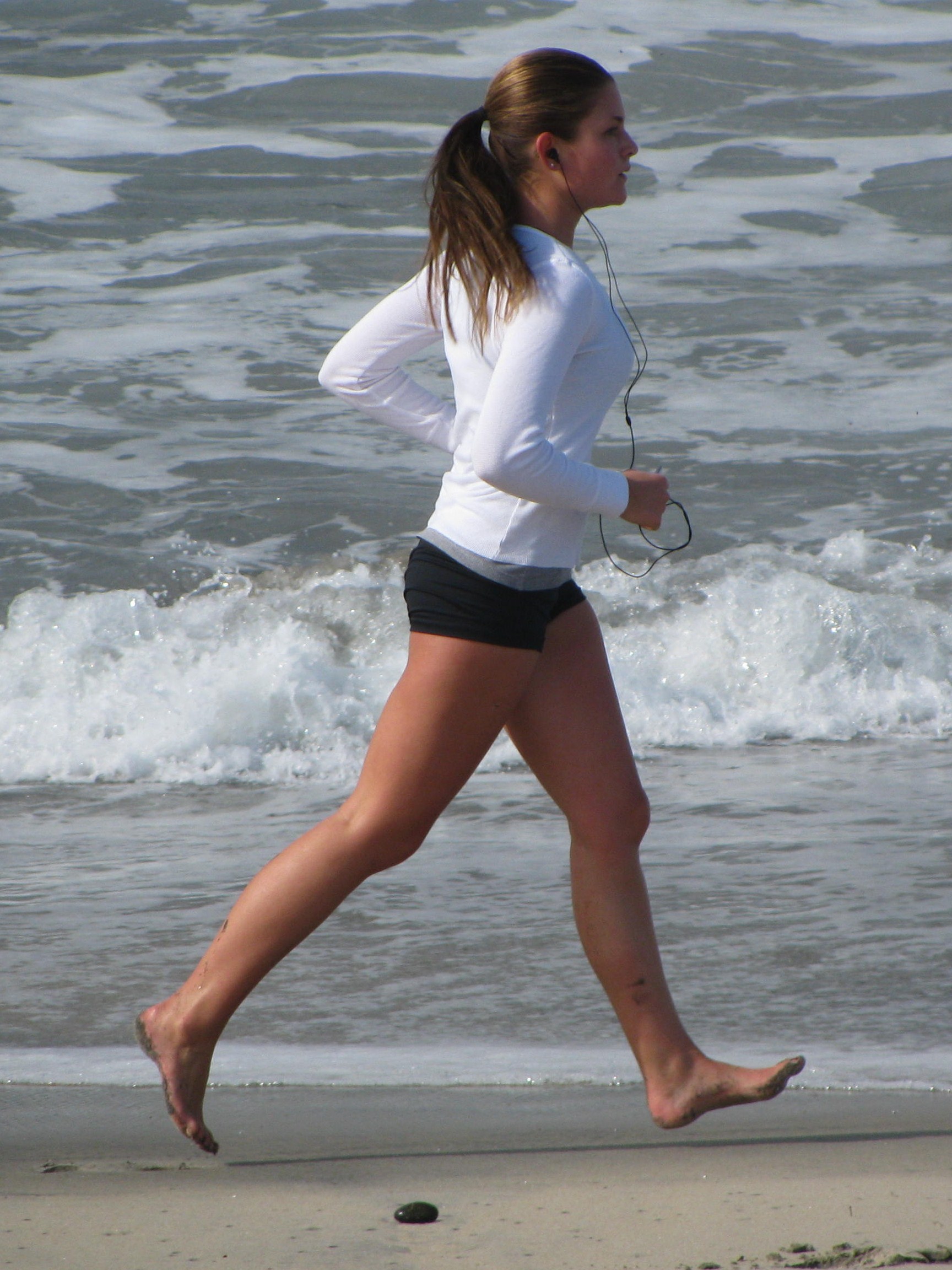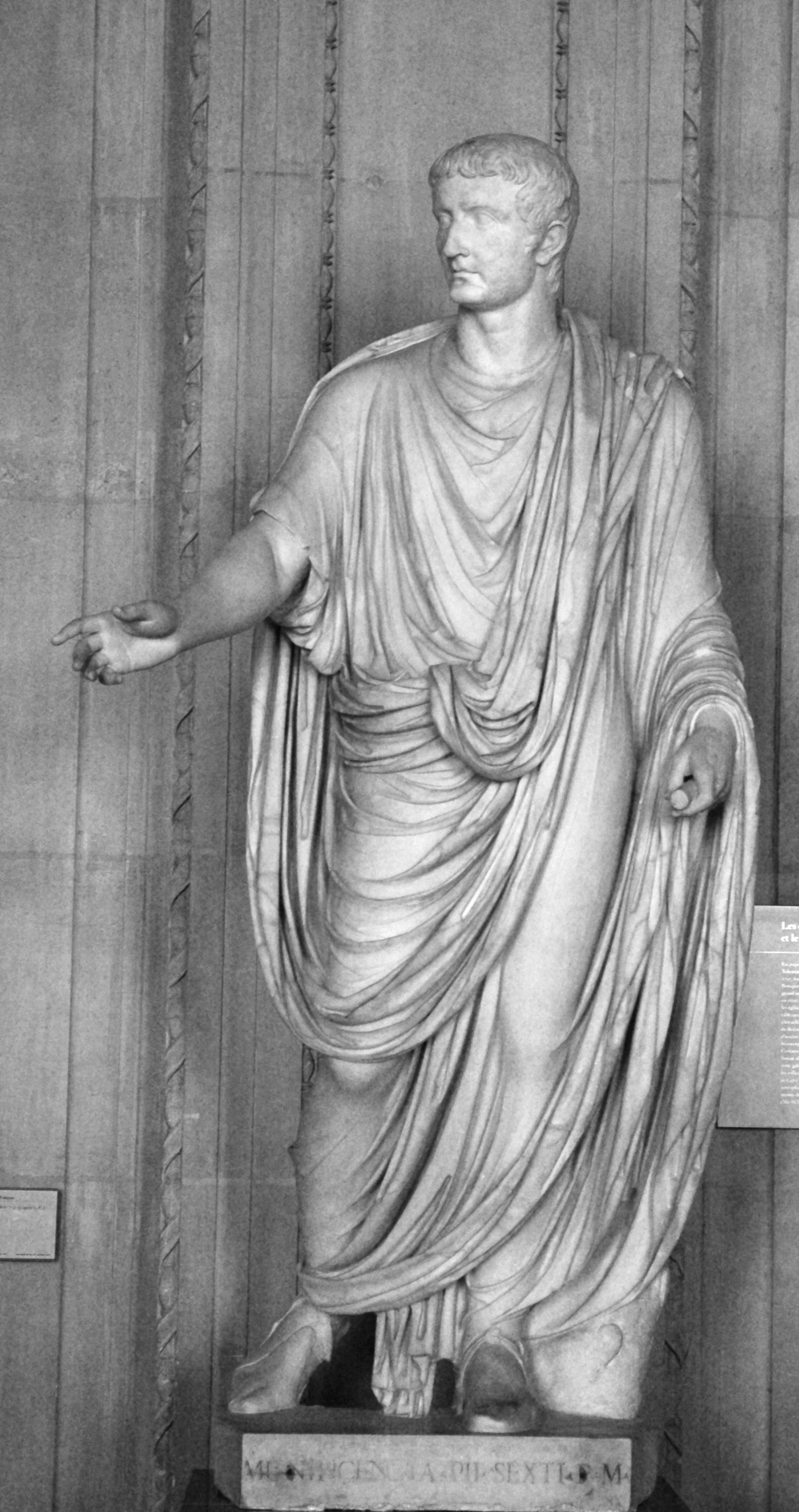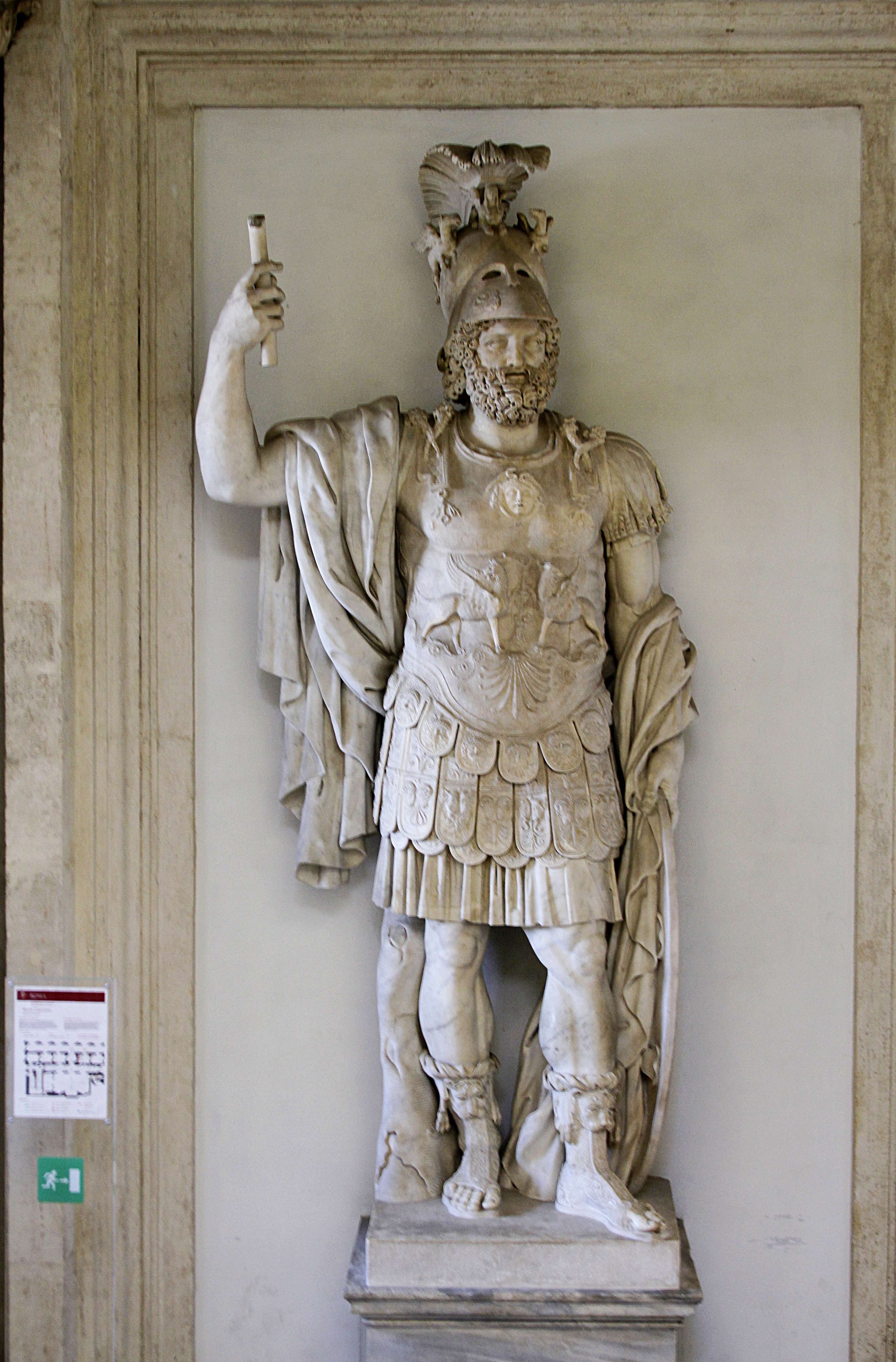|
Barefoot
Being barefoot is the state of not wearing any footwear. There are health benefits and some risks associated with going barefoot. Shoes, while they offer protection, can limit the flexibility, strength, and mobility of the foot and can lead to higher incidences of flexible flat foot, bunions, hammer toe, and Morton's neuroma. Walking and running barefoot results in a more natural gait, allowing for a more rocking motion of the foot, eliminating the hard heel strike and generating less collision force in the foot and lower leg. There are many sports that are performed barefooted, most notably gymnastics, martial arts and swimming, but also beach volleyball, barefoot running, barefoot hiking, and barefoot waterskiing. Historical and religious aspects Historical aspects The ancient Spartans required boys to go barefoot as part of their obligatory military training, and the athletes at the ancient Olympic Games typically participated barefoot and naked. Although the G ... [...More Info...] [...Related Items...] OR: [Wikipedia] [Google] [Baidu] |
Barefoot Waterskiing
Barefoot skiing is water skiing behind a motorboat without the use of water skis, commonly referred to as "barefooting". Barefooting requires the skier to travel at higher speeds () than conventional water skiing (). The necessary speed required to keep the skier upright varies by the weight of the barefooter and can be approximated by the following formula: (W / 10) + 20, where W is the skier's weight in pounds and the result is in miles per hour. It is an act performed in show skiing, and on its own. History of barefooting Barefoot water skiing originated in Winter Haven, Florida. According to the Water Ski Hall of Fame, and witnesses of the event, 17-year-old A.G. Hancock became the first person to barefoot water ski in 1947. That same year, Richard Downing "Dick" Pope Jr., was the first person to be photographed barefooting, stepping off his skis on a training boom alongside the boat. In 1950, the first barefoot competition was held in Cypress Gardens, with Pope and Mexican ... [...More Info...] [...Related Items...] OR: [Wikipedia] [Google] [Baidu] |
Barefoot Running
Barefoot running, also called "natural running", is the act of running without footwear. With the advent of modern footwear, running barefoot has become less common in most parts of the world but is still practiced in parts of Africa and Latin America. In some Western countries, barefoot running has grown in popularity due to perceived health benefits. Scientific research into the practice of running barefoot or with minimalist shoes is increasingly suggesting that it increases intrinsic foot muscle size and strength, but it has been limited to healthy individuals and further research is required to reach definite conclusions. While footwear might provide protection from cuts, bruises, impact and weather, proponents argue that running barefoot reduces the risk of chronic injuries (notably repetitive stress injuries) caused by heel striking in padded running shoes. The barefoot movement has prompted some manufacturers to introduce minimalist shoes, thin-soled and flexible shoe ... [...More Info...] [...Related Items...] OR: [Wikipedia] [Google] [Baidu] |
Footwear
Footwear refers to garments worn on the feet, which typically serve the purpose of protective clothing, protection against adversities of the environment such as wear from rough ground; stability on slippery ground; and temperature. *Shoes and similar garments ease locomotion and prevent injuries. Such footwear can also be used for fashion and adornment, as well as to indicate the status or rank of the person within a social structure. *Socks and other hosiery are typically worn additionally between the feet and other footwear for further comfort and relief. Cultures have different customs regarding footwear. These include not using any in some situations, usually bearing a symbolic meaning. This can however also be imposed on specific individuals to place them at a practical disadvantage against shod people, if they are excluded from having footwear available or are prohibited from using any. This usually takes place in situations of captivity, such as imprisonment or slavery, wh ... [...More Info...] [...Related Items...] OR: [Wikipedia] [Google] [Baidu] |
Daniel Lieberman
Daniel E. Lieberman (born June 3, 1964) is a paleoanthropologist at Harvard University, where he is the Edwin M Lerner II Professor of Biological Sciences, and Professor in the Department of Human Evolutionary Biology. He is best known for his research on the evolution of the human head and the human body. Biography Lieberman was educated at Harvard University, where he received his B.A., M.A. and Ph.D. degrees. He also received a M. Phil from Cambridge University. He was a Junior Fellow in the Harvard Society of Fellows and taught at Rutgers University and the George Washington University before becoming a professor at Harvard University in 2001. Director of the Skeletal Biology Laboratory at Harvard, Lieberman is on the curatorial board of the Peabody Museum of Archaeology and Ethnology, a member of the Department of Organismic and Evolutionary Biology at Harvard, and the Scientific Executive Committee of the L.S.B. Leakey Foundation. Honors and awards * National Merit ... [...More Info...] [...Related Items...] OR: [Wikipedia] [Google] [Baidu] |
Anklet On Female Feet
An anklet, also called ''ankle chain'', ''ankle bracelet'' or ''ankle string'', is an ornament worn around the ankle. Barefoot anklets and toe rings historically have been worn for at least over 8,000 years by girls and women in Indus Valley, in Indian Subcontinent where it is commonly known as ''pattilu'', ''payal, golusu'' and sometimes as ''nupur''. They have also been worn by Egyptian women since predynastic times. In the United States both casual and more formal anklets became fashionable from the 1930s to the late–20th century. While in Western popular culture both younger men and women may wear casual leather anklets, they are popular among barefoot women. Formal anklets (of silver, gold, or beads) are used by some women as fashion jewellery. Anklets are an important piece of jewellery in Indian marriages, worn along with saris. Occasionally, anklets on both ankles are joined by a chain to limit the step. This practice was once prevalent in Southeast Asia, where the e ... [...More Info...] [...Related Items...] OR: [Wikipedia] [Google] [Baidu] |
Healthy Feet
Health has a variety of definitions, which have been used for different purposes over time. In general, it refers to physical and emotional well-being, especially that associated with normal functioning of the human body, absent of disease, pain (including mental pain), or injury. Health can be promoted by encouraging healthful activities, such as regular physical exercise and adequate sleep, and by reducing or avoiding unhealthful activities or situations, such as smoking or excessive Stress (biology), stress. Some factors affecting health are due to Agency (sociology), individual choices, such as whether to engage in a high-risk behavior, while others are due to Social structure, structural causes, such as whether the society is arranged in a way that makes it easier or harder for people to get necessary healthcare services. Still, other factors are beyond both individual and group choices, such as genetic disorders. History The meaning of health has evolved over time. In k ... [...More Info...] [...Related Items...] OR: [Wikipedia] [Google] [Baidu] |
Patrician (ancient Rome)
The patricians (from ) were originally a group of ruling class families in ancient Rome. The distinction was highly significant in the Roman Kingdom and the early Roman Republic, Republic, but its relevance waned after the Conflict of the Orders (494 BC to 287 BC). By the time of the late Republic and Roman Empire, Empire, membership in the patriciate was of only nominal significance. The social structure of ancient Rome revolved around the distinction between the patricians and the plebeians. The status of patricians gave them more political power than the plebeians, but the relationship between the groups eventually caused the Conflict of the Orders. This time period resulted in changing of the social structure of ancient Rome. After the Western Roman Empire, Western Empire fell, the term "patrician" continued as a high Byzantine aristocracy and bureaucracy, honorary title in the Eastern Empire. In many Italian city-states, medieval Italian republics, especially in Republic of V ... [...More Info...] [...Related Items...] OR: [Wikipedia] [Google] [Baidu] |
Calceus Patricius
The calceus (: calcei) was the common upper-class male footwear of the Roman Republic and Empire. Normally made of leather and hobnailed, it was flat soled and typically reached the lower shin, entirely covering the foot and ankle. It was secured with crossed thongs or laces. Equivalent to a short boot or high-top shoe, it was lighter than the military caliga but sturdier than slip-on shoes like the soccus and able to easily handle outdoor use. Name The Latin word derives from ("heel") and the usually Grecian suffix , meaning essentially "heely" or "thing for the heel". It is frequently taken loosely as the general Latin word for any laced and covered shoe distinguished from sandals, slippers, and boots. Theodor Mommsen even considered it to sometimes intend sandals as well. Similarly, medieval Latin used the adjective to indicate both mendicant orders which only used sandals and those which went entirely barefoot. Design Normally made of leather and hobnailed, the ca ... [...More Info...] [...Related Items...] OR: [Wikipedia] [Google] [Baidu] |
Toga
The toga (, ), a distinctive garment of Ancient Rome, was a roughly semicircular cloth, between in length, draped over the shoulders and around the body. It was usually woven from white wool, and was worn over a tunic. In Roman historical tradition, it is said to have been the favored dress of Romulus, Rome's founder; it was also thought to have originally been worn by both sexes, and by the citizen-military. As Roman women gradually adopted the stola, the toga was recognized as formal wear for male Roman citizens. Women found guilty of adultery and women engaged in prostitution might have provided the main exceptions to this rule.. The type of toga worn reflected a citizen's rank in the civil hierarchy. Various laws and customs restricted its use to citizens, who were required to wear it for public festivals and civic duties. From its probable beginnings as a simple, practical work-garment, the toga became more voluminous, complex, and costly, increasingly unsuited to a ... [...More Info...] [...Related Items...] OR: [Wikipedia] [Google] [Baidu] |
Roman Armor
Ancient Times, Roman. - 017 - Costumes of All Nations (1882). The legions of the Roman Republic and Empire had a fairly standardised dress and armour, particularly from approximately the early to mid 1st century onward, when Lorica Segmentata (segmented armour) was introduced. However the lack of unified production for the Roman army meant that there were still considerable differences in detail. Even the armour produced in state factories varied according to the province of origin. The other problem is that the Romans took or stole most of the designs from other peoples. Fragments of surviving clothing and wall paintings indicate that the basic tunic of the Roman soldier was of red or undyed (off-white) wool. Senior commanders are known to have worn white cloaks and plumes. The centurions, who made up the officer ranks, had decorations on their chest plates corresponding to modern medals, and the long cudgels that they carried. Examples of items of Roman military personal armou ... [...More Info...] [...Related Items...] OR: [Wikipedia] [Google] [Baidu] |
Plebeians
In ancient Rome, the plebeians or plebs were the general body of free Roman citizens who were not Patrician (ancient Rome), patricians, as determined by the Capite censi, census, or in other words "commoners". Both classes were hereditary. Etymology The precise origins of the group and the term are unclear, but may be related to the Greek, ''plēthos'', meaning masses. In Latin, the word is a grammatical number, singular collective noun, and its genitive is . Plebeians were not a monolithic social class. In ancient Rome In the annalistic tradition of Livy and Dionysius of Halicarnassus, Dionysius, the distinction between patricians and plebeians was as old as Rome itself, instituted by Romulus' appointment of the first hundred senators, whose descendants became the patriciate. Modern hypotheses date the distinction "anywhere from the regal period to the late fifth century" BC. The 19th-century historian Barthold Georg Niebuhr believed plebeians were possibly foreigners im ... [...More Info...] [...Related Items...] OR: [Wikipedia] [Google] [Baidu] |
Clothing In Ancient Rome
Clothing in ancient Rome generally comprised a short-sleeved or sleeveless, knee-length tunic for men and boys, and a longer, usually sleeved tunic for women and girls. On formal occasions, adult male citizens could wear a woolen toga, draped over their tunic, and married citizen women wore a woolen mantle, known as a Palla (garment), palla, over a stola, a simple, long-sleeved, voluminous garment that modestly hung to cover the feet. Clothing, footwear and accoutrements identified gender, status, rank and social class. This was especially apparent in the distinctive, privileged official dress of Roman magistrate, magistrates, Religion in ancient Rome#Public priesthoods and religious law, priesthoods and Ancient Roman military clothing, the military. The toga was considered Rome's "Folk costume, national costume," privileged to Roman citizens but for day-to-day activities most Romans preferred more casual, practical and comfortable clothing; the tunic, in various forms, was th ... [...More Info...] [...Related Items...] OR: [Wikipedia] [Google] [Baidu] |






